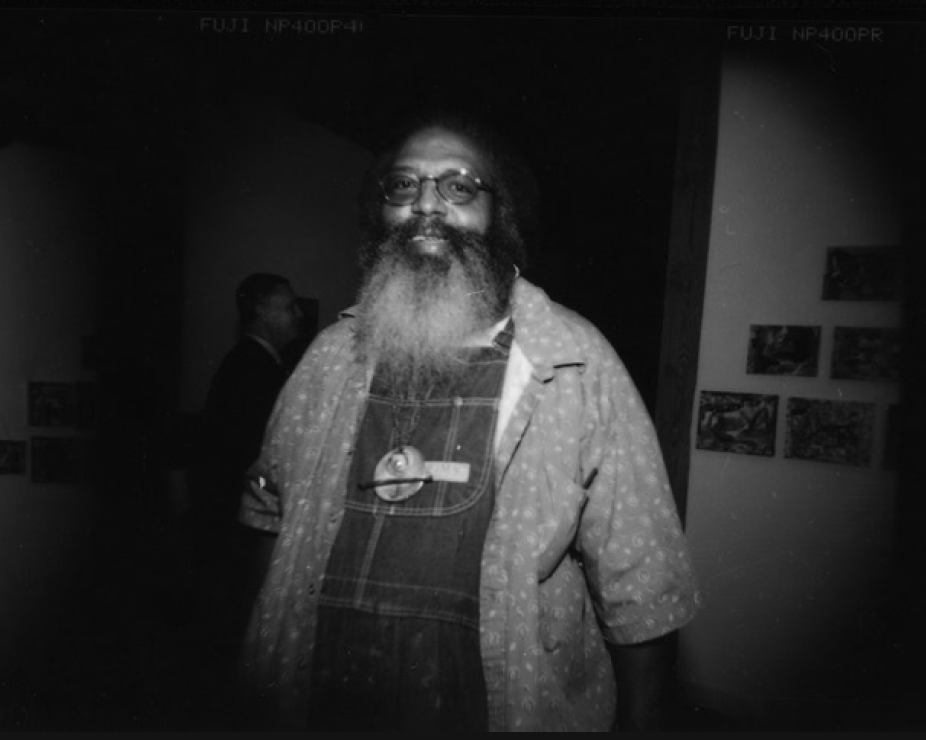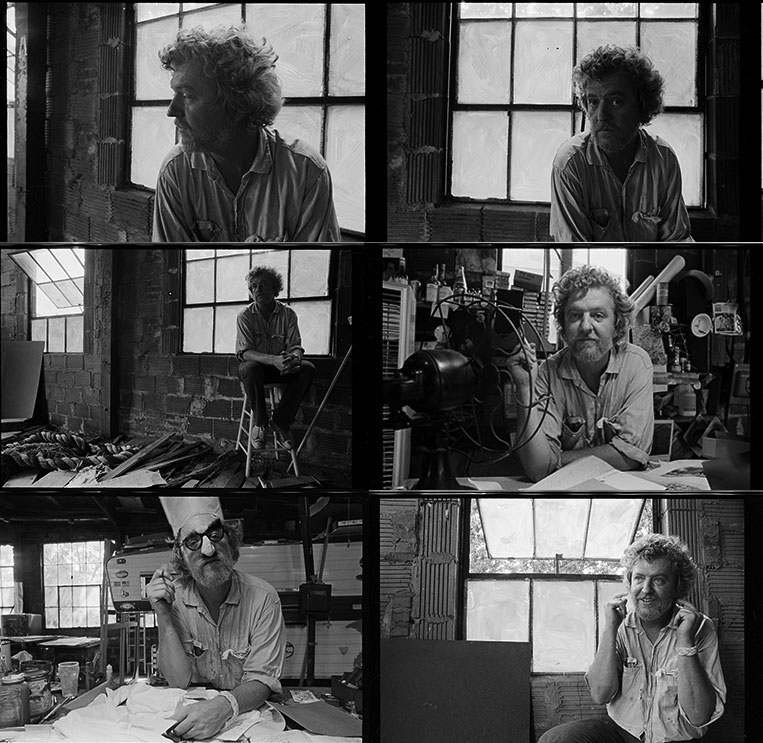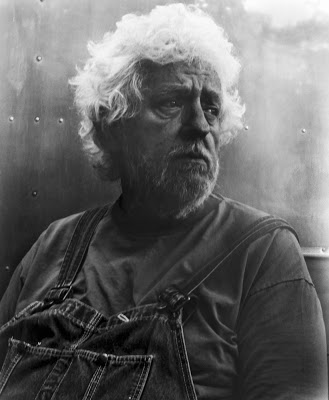The two art fairs in Houston have come and gone, health and with them have passed the fantastic program of talks, lectures, and tours organized by each fair respectively.\n\nIn my last post I mentioned my inclusion in a panel discussion organized and moderated by editor/art writer/critic/curator and all around renaissance woman Catherine Anspon. Fellow panelists for the talk, who each highlighted their respective projects, were Patricia Johnson, Chelby King, and Pete Gershon. Archivist Patricia Hernandez wasn’t able to attend unfortunately, but the project she’s initiated is definitely worth sharing.\n\nFollowing a career as an art gallery director, Patricia has been an art critic for the Houston Chronicle since 1981 and has written articles on Houston and Houston artists for several publications, including Sculpture International, Artspace, Southern Living, and ARTnews. She also wrote the catalogue on Mexican prints and drawings for the exhibit she curated for the Museum of Fine Arts, Houston, in 1983. She is the author of Contemporary Art in Texas and has been nominated twice for a Pulitzer Prize in criticism, 1991 and 1994. Her archive of art research and writing includes thousands of articles and editorials which she plans to incorporate into a book. \n\nAfter a brief introduction by Catherine Anspon, Patricia walked the audience through some standout moment and highlights in Houston’s art history, noting influential characters in our city’s history, including Water Hopps and Domic de Menial, James (Jim) Harithas, Dick Wray, Peter Marzio, and Anne Tucker, Wendy Watriss and Fred Baldwin, among others.\n
\n
\n
\n
![]() |
\n
\n
\n
| View from the audience, Jim Harithas mentioned in discussion |
\n
\n
\n
\nAt this point during the discussion, I was totally engrossed in the information Patricia was sharing, and too I was relieved to see mentioned many of the people Susanne Paul photographed that I knew I would mention as well – I wouldn’t have to introduce them as the last speaker, nor spend the time elaborating on them if they were to be included in my part of the presentation. \n\n\nChelby King was the next to speak – introducing the life and career of Jermayne MacAgy – the focus of her forthcoming book. Chelby has previously held position of Director at the Lawndale Center for Art, is a professor of art and currently researching the life and role of MacAgy in the forging and evolution of the Menial Collection, from a teaching collection at St. Thomas University and Rice University to its ultimate culmination of a world-class museum institution.\n\nChelby detailed MacAgy’s role as a mentor to the de Menils and their pursuit of experiencing the spiritual through art. This history was new to me, and I learned of the teaching model MacAgy incorporated into her experience in Houston and its roots from Harvard and the Fogg Museum. Chelby made the point in her presentation that her historic investigation would would be impossible if not for the archival work already done on the de Menils and Jermaine MacAgy – reinforcing the significance of each panelist’s work current work.\n\nPete Gershon, program coordinator for the Core Residency Program and author of Painting the Town Orange: The Stories Behind Houston’s Visionary Art Environments (History Press, 2014) reads from his now-written volume Collision: Contemporary Artists in Houston 1972-1985 – titled after a 1984 exhitbiton curated by Ann Harithas at the Lawndale Art Center. For this project he draws upon primary archival materials, contemporary newspaper and magazine accounts, and extensive interviews with dozens of significant figures to present a creative non-fiction narrative that preserves and interweaves the stories and insights of the artists, collectors, critic, patrons, and administrators who transformed the city’s art scene.\n
\n
\n
\n
![]() |
\n
\n
\n
| Pete Gershon describes his project Collision: Contemporary Artists in Houston 1972 – 1985 |
\n
\n
\n
\nA description of Collision from Gershon – \n“In the 1970s and ‘80s, Houston emerged as a significant city for the arts, fueled by an oil boom and by the arrival of several catalyzing figures including museum director James Harithas and sculptor James Surls. Harithas was a pioneer in championing Texan artists during his controversial tenure as the impassioned, uncompromising director of the Contemporary Arts Museum Houston. He put the state’s native artists on the map, but his renegade style was too hot for the museum’s benefactors to handle and after four years of fist fights and floods (and of course, some truly innovative programming by both Texans and artists of international stature), he wore out his welcome. After Harithas’ resignation and departure from the CAMH, the chainsaw-wielding Surls established the Lawndale Annex as a largely unsupervised outpost of the University of Houston’s Art Department. Inside this dirty, cavernous warehouse, a new generation of Houston artists found itself and flourished. Both enterprises set the scene for the emergence of an array of small, downtown artist-run spaces including Studio One, the Center for Art and Performance, Midtown Arts Center, and DiverseWorks. Through it all, the members of formally and informally organized groups such as the Women’s Caucus for Art, the Urban Animals, and the Core Residency Program supported and challenged each other’s creative pursuits. Finally, in 1985, the Museum of Fine Arts presented Fresh Paint: the Houston School, a nationally publicized survey of work by Houston painters curated by Barbara Rose and Susie Kalil. The exhibition capped an era of intensive artistic development and suggested the city was about to be recognized, along with New York and Los Angeles, as a major center for art-making activity. The mid-‘80s oil bust temporarily sapped the scene of energy and resources, but the seeds had been sown for the vibrant community of visual art that Houstonians enjoy today.”\n\nThis book, excerpts of which he has presented before (find video here, here, and here), and Pete’s presentation beautifully brought full circle points from both Patricia’s and Chelby’s work, and was a perfect segway into my notes about my current project Focus: Suzanne Paul – some details of which I have shared in previous posts.\n\nTo be brief here, the points I wanted to make about the project I am pursing in archiving the collected photographic works from Suzanne Paul were easy to make given the depth and breadth of the previous panelists’ discussions. \n
\n
\n
\n
![]() |
\n
\n
\n
| Here I speak my part and describe to the audience the inspiration and importance of Focus: Suzanne Paul. |
\n
\n
\n
\nNaturally the further I delve into this project, the more I come to understand the complexities of the artist and her gift of her intuitive photographing. So too the more I come to understand the complex and tightly-knit relationships of the social fabric in the Houston arts scene, past and present.\n\nI wanted to be sure to note foremost that Paul was a true photographic talent – and that though the sharing of her photographs with a broader audience than already exists, we can honor her creative contributions and give her gift of photography its just-due. Another point I wanted to make was that her images are a fantastic promotional tool that document the creative strength and unique output of artwork produced in Houston in the past four decades. Too I waned to offer her archive as a tool for understanding perhaps why our community exists in the manner it does at present and as an aide and resource for critical Houston-related art research. \n\nNot present at the talk was Patricia Hernandez, who has founded the Studio One Archive Resource initiative, formerly the Creating a Living Legacy Project (CALL), with the generous support of the Joan Mitchell Foundation. Thus far, this initiative has supported the career documentation and archival of Houston artists, including Rachel Hecker, Terrell James, Mary Jenewein, Charles Mary Kubricht, Bert Long, David McGee, Beth Secor, and Toby Topek, and has assisted with collecting, organizing and digitizing their history and the input of their history into a CALL database. In fact, for a year and a half, and before the artist’s death, Pete Gershon worked closely with Bert Long to streamline Bert’s extensive collection of documents and artwork created and saved throughout his long career as a visual artist. I must also note that at present Deborah Colton gallery represents the estate of Bert Long, and as well, Bert is the subject of some of Suzanne Paul’s photographs. In this context, it’s easy to see how thoroughly interconnected these research, archival, and publication projects are and how combined they so well serve our community.\n\nThe synergy of these projects perfectly set the tone to introduce to the audience how important and needed an umbrella foundation – such as we envision Houston Foundations could be – is for our city. Perhaps an organization like Houston Foundations could spearhead and fund projects similar to those each panelist presented and assume more of the administrative tasks – like fundraising for publishing worthy books like Pete’s Collision, the forthcoming book from Chelby King, or an anthology of Patricia Johnson’s collected critical essays. This panel discussion not only shared insightful material on the history of art in Houston, but reinforced to the participants and organizers how much demand there truly is for an organization to spearhead the movement to preserve and revive our little known art history.\n
\n
\n
\n
![]() |
\n
\n
\n
| First public mentions of what we hope to fully develop – Houston Foundations |
\n
\n
\n
\nFor those in attendance, we hope at least that the point was made that we live in a city rich in arts and talent – not just in its artists, but in its researchers and scholars and in those who are passionate about sharing and preserving our unique history. For the participating panelists, this discussion was further encouragement to maintain our purists but also a reminder of our shared goal and how wonderfully intertwined our projects are and how future collaborations are sure to develop.\n\n \n
***
\nContent originally published by Theresa Escobedo, here, on 10.14.16




